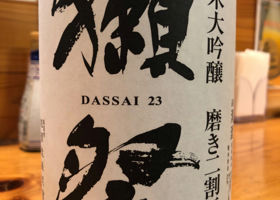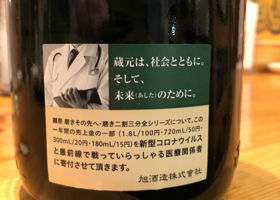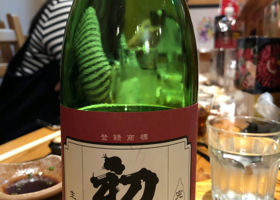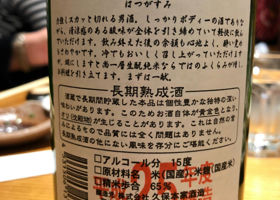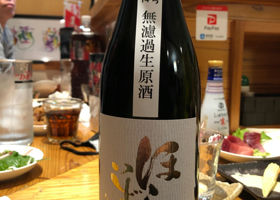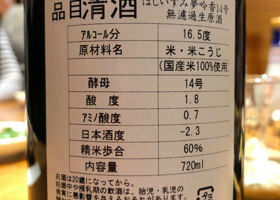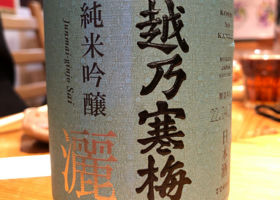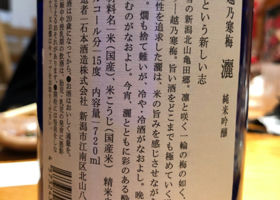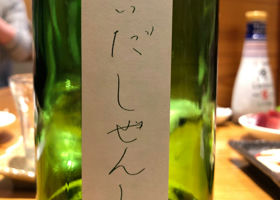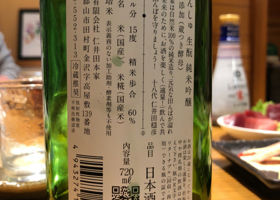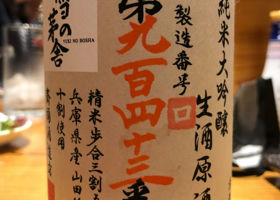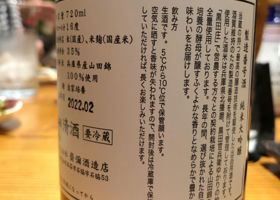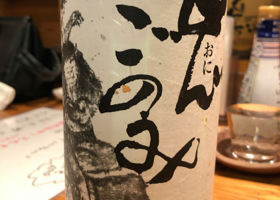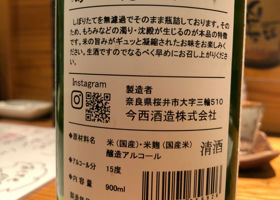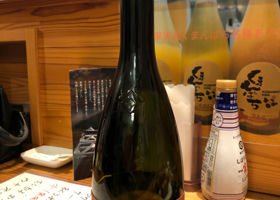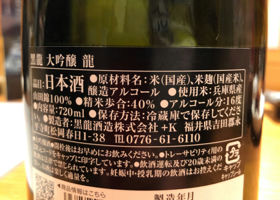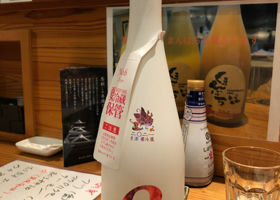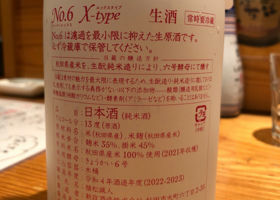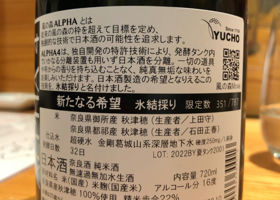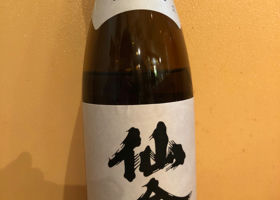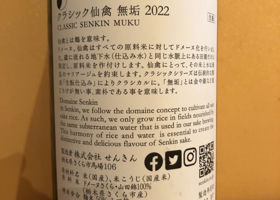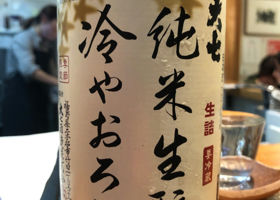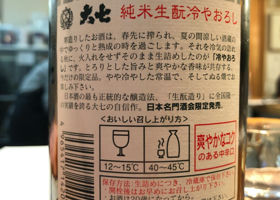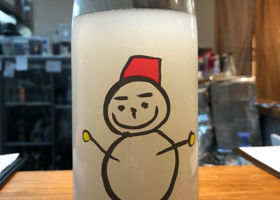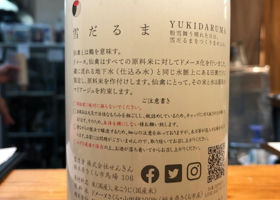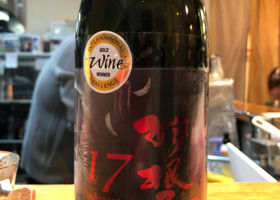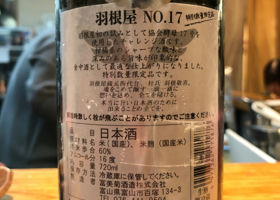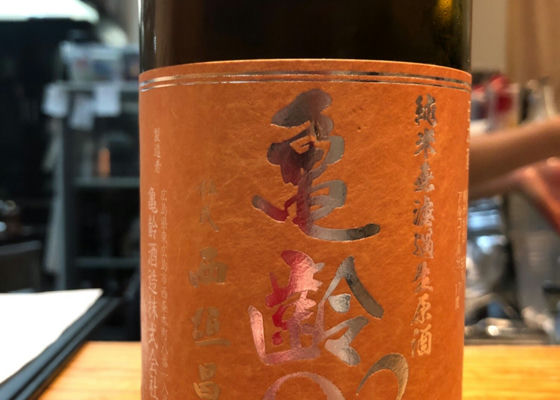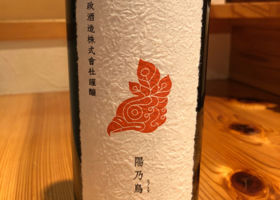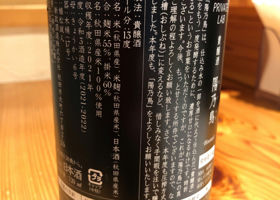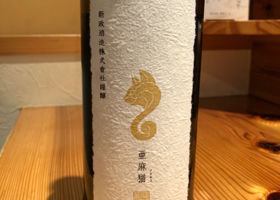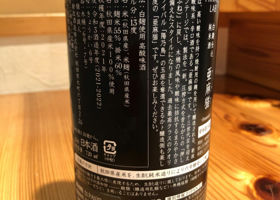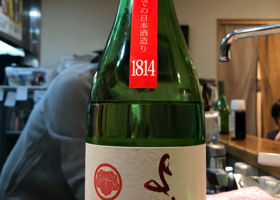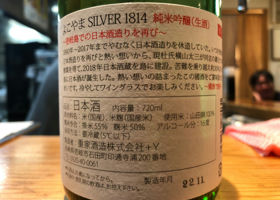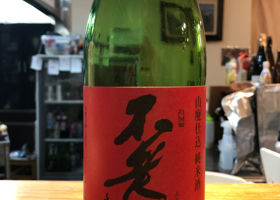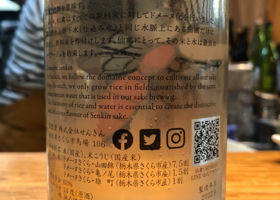Timeline
なまころThe balance of rice flavor, sweetness, and acidity is superb, and the depth of the flavor is as one would expect.
While the taste is neutral and easy to pair with anything, the deep rice flavor in the aftertaste gives the impression of a delicious sake. なまころIt is aged for two years and has a matured taste like Shaoxing wine. However, it is not heavy and can be drunk rather lightly, so it is good for beginners to matured sake. なまころIt is a dry sake even though it is a draft sake.
However, it is not sharply spicy, but rather has a good balance of sweetness and umami. なまころThe taste is mellow, but still a traditional sake. The unpolished and unrefined taste may not be to everyone's taste buds...💦. なまころLightly colored and umami-guchi.
Unfortunately, for a junmai ginjo, it tastes a little bit exasperated.... In the best sense, it has a traditional taste.
It is easy to match with any dishes. なまころThe very elegant sweetness is impressive.
The sweetness is enhanced by the moderate acidity. It is also good even if you taste it by itself.
Recommended for women and sake beginners. なまころIt has a pleasantly elegant umami and acidity, and is very good as a food sake.
On the other hand, if you drink it by itself, you may feel a little bit of a tangy taste, which gives a subtle impression... なまころThe taste is strong and umami is suddenly felt in the mouth, but the taste quickly recedes, giving the impression of being very light and refreshing. It is a strange sake that is rich yet light.
I may be inexperienced, but I have never had a sake with a similar taste, and it is a unique sake with a unique flavor.
It seems to go well with rich seafood such as sea urchins. なまころIt is like drinking water extract.
The mild flavor characteristic of No. 6 yeast is so pronounced that it no longer feels like sake, but rather like drinking water.
It has an elegant sourness and sweetness, slightly like that of a fine muscat.
It is a poor analogy, but it tastes like a very refined version of "natural peach water. Moreover, you don't feel any alcohol at all.
I suspect that few people would be able to identify it as sake after drinking it blindfolded.
This is one of the most complete sake.
なまころThis sake is made with a unique technique of separating sake without using any separator at all in the fermentation tank. As a result, there is a slight lees floating in the sake.
The sweetness reminiscent of peaches and citrus acidity spread on the palate, and after the umami flavor spreads in the mouth, it quickly disappears, leaving behind an elegant acidity.
Kaze no Mori gave the impression of a fresh and youthful sake, but this one gives the impression of having grown up since then.
It has a very high degree of perfection, and like Shinmasa No. 6, it seems to have broken through the boundaries of sake and become a different kind of sake. なまころThe delicate acidity derived from the sake yeast comes first, followed by umami and sweetness that fill the mouth. The finish is slightly lychee-like and disappears quickly and refreshingly.
This is a sake that allows you to enjoy the unique flavor of Sengoku.
なまころIt is unfortunate that there is a slight bit of egginess on the palate.
The delicate and deep flavor derived from the sake's natural yeast and the square taste derived from cold brewing are tasty, but we would like to see a little more improvement in the quality of the sake. なまころA fizzy cloudy sake. The carbonation is quite strong and if you shake it even a little, it will spurt out of the bottle all at once, so be careful❗️.
Delicious fresh acidity. The richness of the cloudy taste is moderate.
The best selling point of this sake is probably the label on the bottle.
I would definitely like to enjoy it with my loved ones, while enjoying it warmly in a kotatsu (Japanese warming table) in cold winter. なまころThe sake is said to be made with Association Yeast No. 17.
The sharp citrusy acidity is impressive.
At the same time, it has a robust umami flavor.
It is surely a perfect match for firefly squid, a specialty of Toyama, where the brewery is located. なまころThe yellowish hue of the wine makes one expect it to have a matured taste, but it is unexpectedly light.
It has a soft acidity and a hint of sweetness. It also tastes a bit like old sake.
If anything, it tastes like something a sake lover with a taste for sake would like.
It would be better served with fermented food or something with a little bit of a peculiar taste. なまころIt has a very elegant sweetness.
It is not heavy or cheap, but has a flavor reminiscent of lychee and a sweetness like old-fashioned candy.
There is also a delicate acidity characteristic of Shinsei. なまころAlong with a firm umami, it has a delicate and deep acidity derived from the sake brewing process, and the aftertaste is clear and transparent with a hint of rice flavor.
Perhaps it is because the taste is derived from white malted rice, or perhaps it is because of this, but it has a sour taste. Compared to ordinary sake, it has a "sensual" impression.
This is what good sake should be like, the king of saké on the royal road!
This is the kind of sake I would like to have with the best Japanese food at a high-class ryotei (Japanese-style restaurant). なまころSweet.
The mouthfeel is rather heavy sweetness, and the lack of sharp acidity in the aftertaste gives it a long-lasting sweetness that is impressive.
It is a sake that is more likely to show its true value when paired with dessert cakes and puddings than when drunk before or during a meal.
This is a sake that you should definitely bring to a girls' home party. なまころAged well, like an old wine.
The sweetness is impressive, like maple syrup. なまころIt has a soft taste with pleasant sweetness and acidity.
The brewery seems to be particularly particular about water, and the characteristics of clear soft water are well expressed. RecommendedContentsSectionView.title
